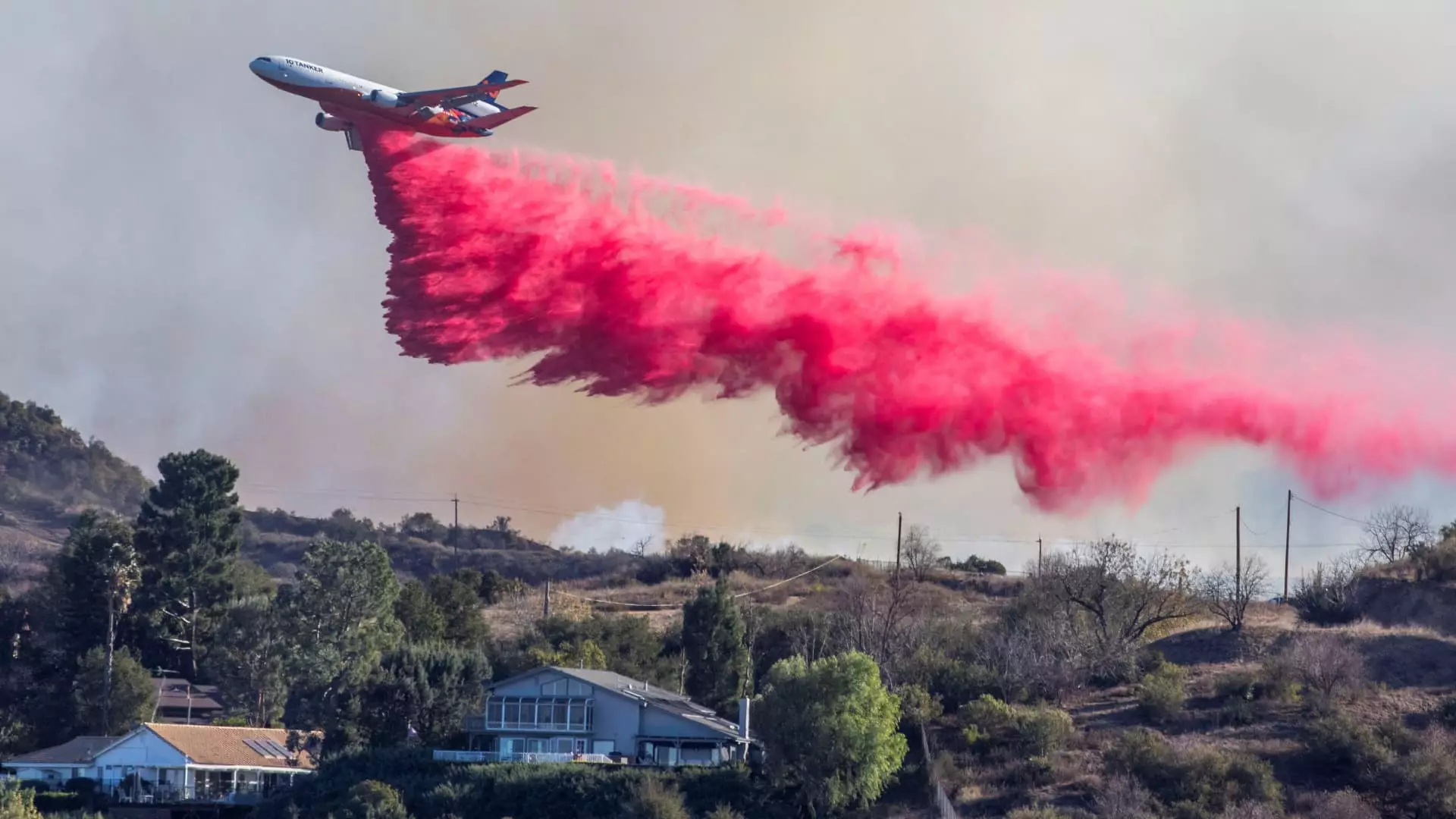The frequency, intensity, and unpredictability of wildfires have become a national concern, particularly in places like California, where the combination of natural elements and human encroachment has led to catastrophic situations. Earlier this month, Los Angeles witnessed out-of-control wildfires that put thousands of residents at risk, highlighting a troubling trend: what used to be a defined wildfire season is becoming a year-round emergency. The California Department of Forestry and Fire Protection, often known as Cal Fire, maintains a fleet that is billed as one of the largest civil fleets in the world. Yet, as demand for aerial firefighting rises, the reality is becoming stark—there simply aren’t enough resources to combat ever-increasing fire threats effectively.
Private companies are stepping up to fill the void left by governmental agencies. While the U.S. Forest Service and similar organizations have contracts with a few select vendors to provide firefighting aircraft, firms like 10 Tanker Air Carrier, based in Albuquerque, New Mexico, hold a critical role in the firefighting ecosystem. The recent wildfires, particularly the devastating Palisades and Eaton fires, showcased that companies with unique fleets—like 10 Tanker’s specially converted DC-10 aircraft—are indispensable in moments of crisis. CEO Joel Kerley noted that with the evolving nature of wildfires, these aircraft have been pushed into action despite being on the brink of their off-season maintenance—a dilemma that illustrates the growing urgency and unpredictability in managing wildfires.
Rising Demand Amid Climate Change
The situation is compounded by climate change, which the United Nations predicts will lead to even more intense and frequent wildfires in the 21st century. Data from the U.S. Environmental Protection Agency corroborates this projection, indicating that the land area ravaged by wildfires has steadily increased over the last 20 years. As fire seasons lengthen and escalate in severity, the aviation firefighting sector faces an overwhelming challenge. Kerley’s concern that “there’s not enough air tankers to go around” is echoed across the industry. Both the growing severity of wildfires and the limitations of existing firefighting resources create a perfect storm of increasing operational stress and demand for aerial firefighting capabilities.
Operational budgets are under significant scrutiny, not only from a financial standpoint but also concerning readiness and availability. Providers generally operate under long-term contracts during peak wildfire season, but in off-peak months, they find themselves in a precarious position, often tied up with winter maintenance. For instance, Bridger Aerospace had to scramble to deploy its Canada-made Super Scoopers just as the wildfires erupted, revealing how essential readiness is. They reported record profits due to prolonged dry conditions, but maintaining and equipping fleets to meet year-round demands remains a slow and cumbersome process.
Aero Air’s president, Kevin McCullough, highlighted how the modifications necessary to convert civilian aircraft into effective firefighting units take considerable time and investment. Even with the existence of contracts, there is no certainty that new aircraft can be added to the fleet promptly. The ongoing need for aerial firefighting solutions demands immediate attention to expand and modernize fleets while adhering to complicated regulatory structures.
Innovative Solutions on the Horizon
While some companies jet to keep pace with current demands, others invest in future innovations. De Havilland’s development of the DHC-515, an upgraded version of their popular water-scooping aircraft, represents an attempt to meet both current emergencies and anticipate future needs. Enhancements in cockpit design, water-drop technology, and equipment durability are crucial not only for efficiency but also for ensuring pilots can operate safely and effectively in challenging environments.
As the trend indicates a rise in wildfires globally, it is necessary for both public and private sectors to collaborate in ensuring that firefighting resources keep pace with the evolving landscape of climate change. The war against wildfires isn’t just fought on the ground; it has extended into the skies—and adapting to this new reality requires innovation, investment, and commitment on all fronts.
The alarming frequency and severity of wildfires are relentless. As demonstrated by the recent Los Angeles wildfires, there is no off-season for nature’s fury. The need for robust aerial firefighting resources has never been more critical. If the stakes weren’t already high, the reality that lives and property are constantly at risk underscores the urgency for innovation and expansion in this sector. It is imperative for policymakers, industry leaders, and communities to work together to address these escalating challenges, ensuring that adequate firefighting resources and strategies are in place to protect lives and the environment in a rapidly changing world.

